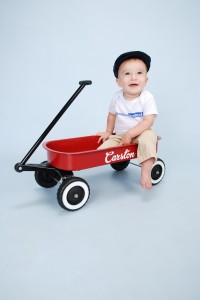The past month or so has been pretty crazy in the Levey Friedman household-- death, life, illness(es), first teeth, a hurricane and a nor'easter, Halloween, an election, the list goes on. Through it all I've attempted to keep writing, but the priority has been parenting the Little Man... especially after we lost our childcare in the midst of everything else! Being a SAHM for a few weeks meant my child got to eat Chicken McNuggets for the first time (which he obviously loved; he also napped better than ever after eating them, so McDonald's clearly knows what they are doing). I attempted to not feel guilty about this, and other things during this time, with varying degrees of success.

Having written about parenting for years, parenting my own child has certainly added a new dimension to my work, as I knew it would. And just this week I published my first ever parenting essay over on Kveller's Raising Kvell blog. You'll see that it's about whether or not Little Man should be thinking about competition at 8-months-old. [You will also note that I am not the woman pictured swimming. As I say to the husband each week, "Someone would have to pay me a lot of money these days to get me into a bathing suit." Of course, if you're that person, feel free to call or email me.]
In last month's Boston Magazine I wrote about some hyper-competitive sports parents in New England, a group which often makes national headlines for their misbehavior. Swimming parents did make the tournament, but didn't advance far, which in this case is a good thing. It seems like I won't be part of that group, although clearly I can't speak for the aforementioned husband. Yesterday I was on NECN's The Morning Show talking about this issue (see below) and speculating about why these stories often come out of the Boston area.
(In the past month I've recently addressed some other parenting issues, from a sociological perspective, on The Morning Show including parents using social media to discipline their children and parents trying to ban yoga from their children's elementary school.)
Parenting a competitive child does not come cheap, as this recent CNBC.com slideshow that features my research reveals, but many parents consider it worth the effort. Parents are also starting to "afterschool" their kids, as this new, interesting article reveals; note that I'm quoted here as saying, "They want to make sure their kids stay at the top of their class," but in general parents just want to try to be sure their kids "stay at the top."
As I've learned over the years people can stay at the top in a variety of fields. It can be in parenting, swimming, hockey, football, chess, soccer, dance, school, and, yes, beauty pageants. Competition abounds in our society. As a follow-up to my two pieces earlier this year on beauty queen political candidates-- women looking to conquer both pageants and politics-- I posted on The Hill this week with an update on how the beauties fared in their elections (spoiler: one won!).
Because I was home with him I got to take the Little Man to see democracy in action for the first time. But he wouldn't tell which beauty queen politician he would have voted for... Guess I'll have to wait until he can talk to find out!





